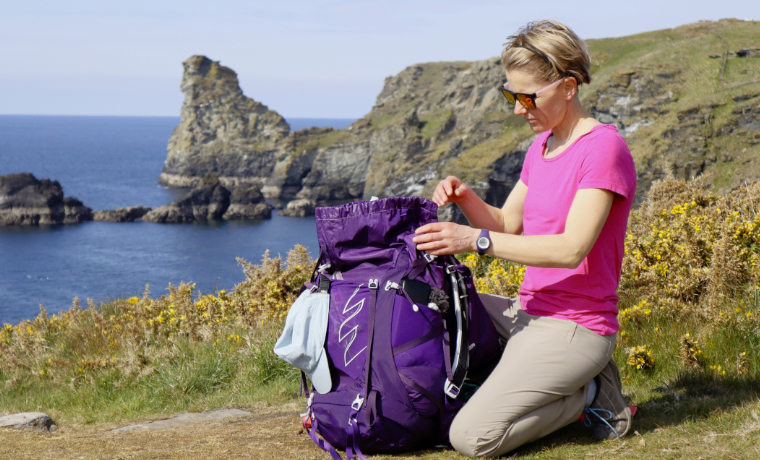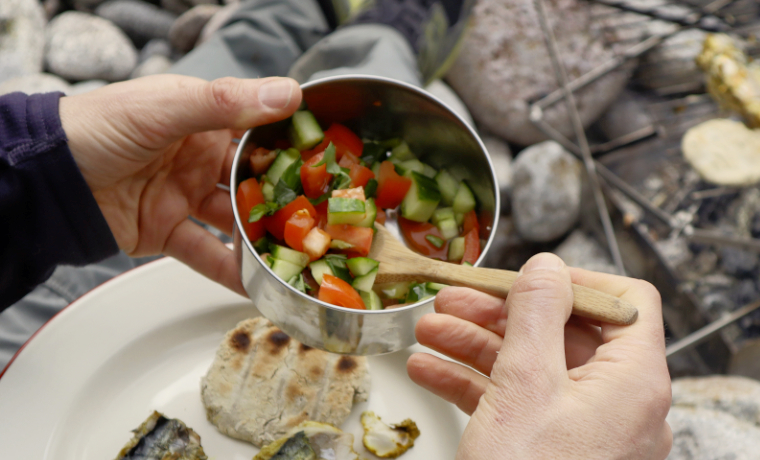If you are an outdoorsy type, you probably love nature and contribute to its preservation. Luckily, today it is not too difficult to find greener alternatives to everyday items. For instance, almost every piece of your outdoor clothes and gear has a more sustainable counterpart in terms of production and the use of sustainable fabrics.
Recently, bamboo has emerged as one of the most popular natural options for just about everything. From toothbrushes and clothes to building materials, the whole range of bamboo products is only a click away. But why is bamboo considered eco-friendly? What are the benefits of using clothing and gear made of this natural material? And is bamboo sustainability all that it’s cracked up to be?
Read on to find out!
- Why we love bamboo
- Bamboo vs. cotton: advantages of bamboo clothing
- Some disadvantages of bamboo clothing and gear for outdoor use
- Bamboo gear for nature lovers
Why we love bamboo
Bamboo is an amazing natural and renewable resource. Let’s take a look at some of the bamboo sustainability facts.
01It grows rapidly and prevents deforestation
Although many mistake it for wood, bamboo is a type of grass that grows very quickly. There are more than a thousand bamboo species, and all of them rejuvenate rapidly. Some kinds even grow about 35 inches (90 cm) a day.
In other words, when you cut down a bamboo forest, it will take only around seven years to grow back. On the other hand, hardwood forests need about thirty to fifty years to reach maturity. So, if we used bamboo as the primary source instead of wood, we could reduce deforestation.
02Bamboo renews on its own
If you harvest bamboo and leave the roots intact, the forest will simply revive itself. That means you don’t have to plant it over and over again. Furthermore, the roots are connected in an underground root system. That means bamboo also holds the soil together, preventing erosion and preserving all the nutrients.
03It grows without much assistance
Bamboo doesn’t require special care or lots of water to survive. Its roots naturally hold moisture, meaning you don’t need to water it as much and replenish the soil. On top of that, you don’t have to use harmful herbicides, pesticides, or fertilizers. That way, bamboo growing doesn’t spoil the surrounding ground or water.
04You can grow it in various regions
This plant is highly adaptable and can grow in various climates across Asia, Australia, Africa, North and South America. Of course, it will not grow as rapidly in every region.
So, taking all that into account, it is safe to say that bamboo is one of the most sustainable natural materials. Another great thing about bamboo is that it is strong and durable (even stronger than steel) but still 100% biodegradable. What’s more, you can recycle all bamboo products and even compost those that don’t contain additional chemicals. For this reason, bamboo supports a circular economy and is eco-friendly.

Bamboo vs. cotton: advantages of bamboo clothing
Let’s look at several benefits of ditching cotton and buying bamboo clothes.
01Bamboo is very soft and kind to skin
Bamboo clothes have a softer and more luxurious feel than cotton. In addition, they are anti-static and don’t irritate the skin. And, since growing bamboo doesn’t require pesticides, bamboo clothes don’t contain harmful chemicals. That is why they are suitable for those with sensitive and allergy-prone skin.
On the other hand, the cotton plant needs a lot of pesticides to help protect it against natural enemies. So, cotton clothes are not as chemical-free and hypoallergenic as those made of bamboo.
02It is comfortable
Bamboo materials are three times more absorbent than cotton ones. That means your bamboo outdoor clothes and workout gear will keep moisture away from your skin. As a result, you will feel comfortable and dry throughout the day.
Likewise, the moisture doesn’t stay on the surface of bamboo materials, as it does on synthetic ones. So, you won’t have to worry about bacteria that cause odours. As a result, you’ll be able to wear the clothes longer before having to wash them.
03It offers amazing temperature control
Bamboo clothes are dense enough to keep you warm but breathable as well. That is very important if you like active adventures and exercising outside during different weather conditions. Clothes made of bamboo will help you keep an even temperature.

Image by: BAM Clothing
Some disadvantages of bamboo clothing and gear for outdoor use and the environment
Harmful chemicals
Although bamboo is a natural material, the textiles made from it are usually semi-synthetic because they go through a lengthy production process. The most common bamboo fabrics used for clothing are bamboo viscose and lyocell. Bamboo viscose is significantly less expensive to produce and uses the rayon production method. To create the viscose rayon fibres, however, manufacturers need to use chemicals that are harmful to workers and the environment, such as solvents, carbon disulfide, and sulfuric acid.
On the other hand, lyocell material production uses less toxic chemicals and is more eco-friendly. That’s why Tencel lyocell fabrics are a better alternative to both cotton and viscose clothing. Still, natural bamboo materials are the best and most sustainable option because they require only mechanical processing without any chemicals involved.
Is all bamboo sustainable?
Another big problem is that not all bamboo is farmed sustainably. Thanks to the surge in popularity, companies clear large land areas to plant bamboo, which harms the local wildlife and ecosystems. At the moment, China is the only commercial-scale bamboo manufacturer. But there are some claims that Chinese farmers use pesticides and fertilisers, even though the crops don’t need chemicals to grow.
How practical is bamboo clothing?
When buying bamboo outdoor clothing and gear, keep in mind that they are more expensive than their cotton counterparts. Another disadvantage is that bamboo clothes tend to shrink more, so be careful when choosing the size. When washing, bamboo fabrics also absorb more water than cotton clothing, which is why it takes them longer to dry. And finally, we should mention that bamboo materials tend to wrinkle more easily.

Bamboo gear for nature lovers
Spending time in nature allows you to enjoy plenty of activities, like camping and hiking. But to do it in an eco-friendly style, you need proper gear. Luckily, today you can buy various bamboo items and truly sync with nature around you. You can even join the zero-waste movement and ensure your adventures outside don’t leave any traces in the form of pollution.
For instance, there are a lot of cooking accessories like spoons, skewers, cutting boards, and even bamboo plates and utensils you could purchase instead of the usual single-use plastic variants. Furthermore, there are folding camping and picnic tables with stools that can replace your plastic garden patio.
Of course, if you like spending time outside more actively, you should check out bamboo walking gear, such as trekking and ski poles. Also, if you feel extra adventurous, you can even make a perfect natural BMX frame out of bamboo.
Final thoughts
All in all, bamboo is plentiful, restores quickly, and is easy to farm. What’s more important, things made of bamboo are long-lasting and do not add to the already huge pollution problem. It’s worth remembering, however, that bamboo sustainability is a bit of a complex subject and that not all bamboo products are made equal. So be sure to do your homework, research the sources of bamboo and brands’ production precesses and look for products using Tencel lyocell fabrics rather than rayon.
So, if you really enjoy hiking, camping, working out outside, or just have profound respect for nature, try switching to bamboo clothing and gear. By doing so, you will make this planet a slightly cleaner place and might even inspire others to follow your example.



